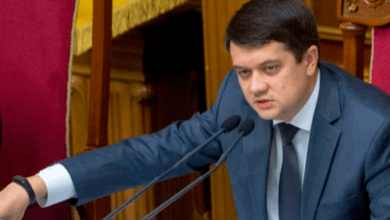Putin’s decree on the increase of the army provides for mobilization measures in the occupied territories of Ukraine: Ihor Tyshkevich

In recent years, the military-political situation in Russia remains one of the hottest topics on the international scene. In the conditions of prolonged military operations in Ukraine, the Kremlin’s policy acquires new shades, which demonstrates both internal problems and strategic ambitions. Putin’s decree on increasing the number of Russian armed forces became another signal not only for the international community, but also for Russian society itself. This decision immediately raised a number of questions: how will it affect the combat effectiveness of the army? Is this a direct recognition of the need to expand military resources due to difficulties at the front? And most importantly, how does the Kremlin plan to implement these changes in conditions where Russian society is tired of war and resources are limited?
An increase in the size of the army, on the one hand, looks like a strengthening of the country’s military power. However, in practice it does not always lead to a real increase in combat power. In the conditions of modern war, quantity does not always mean quality, and here it becomes obvious that the Kremlin is not just trying to increase the army, but is creating new mechanisms for attracting resources, in particular, in the occupied territories. Therefore, understanding how this decree is implemented and what its real consequences are for Russia and the international community is extremely important.
Ihor Tyshkevich, expert of the “International and Domestic Policy” program of the Ukrainian Future Institute believes, that we should not expect a significant increase in the number of recruits in the Russian army. The size of the army may be growing, but this does not mean that Russia is ready to fully recruit new contractors. Instead, the Kremlin uses other methods to replenish its forces.
“This difference can be covered by transferring conscripts to contracts (which is already happening quite actively), as well as mobilization measures in the occupied territories of Ukraine.
The latter is completely imperceptible to an “ordinary resident of the Russian Federation”, because in his perception there is “Russia” and there are “new territories” that are “not quite Russia”. And he doesn’t care how many people will be sent to slaughter there. And formally, the Kremlin managed to declare these territories as its own. Therefore, it is possible to take Ukrainians en masse and send them to the front, to fight against Ukraine. So that later, on external platforms, the old propaganda cliché about “civil war on Ukrainian territory” will be mentioned.
The second part remains – a demonstration of some mobilization measures for the average Russian. In order not to go to the front, but also to wear a uniform. After all, the average Russian is frightened by the Kremlin’s lack of reaction to the events in the Kursk region. A demonstration of the loss of the status of a “great power” or a demonstration of weakness is a blow to the foundations of the worldview of the population of the Russian Federation. – emphasizes the expert
According to Tyshkevich, another aspect of Putin’s decree is the creation of mobilization measures for the domestic consumer. The average Russian is afraid to go to the front, but wants to see that the authorities are taking steps to protect the country. To reassure the population, the Kremlin proposes the creation of “armed units” consisting of citizens who are in the mobilization reserve, but who actually stay at home.
They formally help the security forces in the border areas, performing certain functions, but in fact do not take an active part in hostilities. This allows the governors to preserve the labor potential of the regions, and the Kremlin to prepare potential mobilized people, who in the future can be sent to the front when the mobilization is officially announced.
“And here, on the same day, comes another piece of news. I quote: “The Government of the Russian Federation supported the draft law on the right of the heads of regions to create armed units to maintain order and help security forces during martial law.”
Simply put, in the subjects of the Federation, in addition to territorial defense, state unitary enterprises are created in the border regions. In which citizens who are in the “mobilization reserve of the Armed Forces of the Russian Federation” are recruited. That is, those who could be mobilized. But in fact, they stay at home and several days a week perform the functions of assisting the power structures.
For the population, this is a demonstration of some actions, the appearance of new uniformed officers. Governors have an opportunity to preserve the labor potential of the region. And for the Kremlin, when mobilization is announced (which is quite possible), a contingent is ready and selected to be sent to the front,” – the expert believes.





